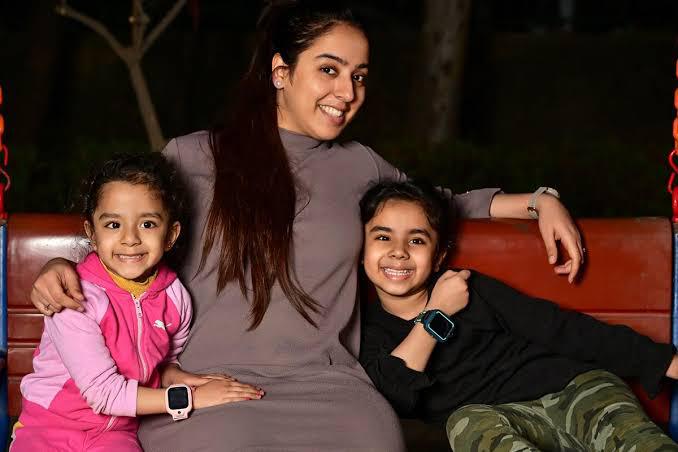Sekyo offers a range of smartwatches with GPS and location-based tracking, which help parents know the whereabouts of their children in real time.
Afew years ago, Smridhi Goyal, a mother of two, went to a carnival in Delhi with her daughter. After some time, she lost sight of her daughter for just a couple of minutes. But, in those few minutes, the mother’s entire world was turned upside down.
This incident urged Smridhi to find a solution that could help parents ensure the safety of their children.
Smridhi began her research on child safety and realised that there was a dire need for a product that would help parents know the whereabouts of their children at all times.
According to data from the National Crime Bureau of India, a child goes missing in India every eight minutes.
“Being parents of two young girls, we (Smridhi and her husband Amit Goyal) understood the need and requirements of other parents who were looking for safe technology to ensure the security of their children. This is where Sekyo came into the picture,” Smridhi, Co-founder and CEO of Sekyo, tells YourStory.
In 2019, the Goyals launched Sekyo, a startup that offers a range of smartwatches with GPS and location-based tracking. Through Sekyo, the Goyals strive to help parents track their children’s location in real time—anytime, anywhere—and stay connected with them.
Features of Sekyo
Sekyo’s watches boast of a host of tracking solutions and parental controls. The watches are SIM-enabled, enabled through an app on the mobile phone of parents/guardians, and act as complete phones by themselves, says Smridhi.
The basic watch has features such as location tracking, two-way voice calling between the child and the parents/guardians, parental monitoring, school mode, and an SOS button. The advanced watches have additional features such as geofencing, video call, text, remote monitoring, remote health monitoring, watch removal alerts, live battery status, and many other parental control features.
One can restrict the people who can call on the watch, thus providing additional security for the child, says Smridhi. “We have also kept the security of others in mind and are determined that historic data does not get stored in the cloud,” she adds.
Sekyo has seven SKUs across three variants and are priced between Rs 2,500 and Rs 8,000 depending on the features. The watches come with a one-year warranty.
The watches are water resistant and come with the ruggedness that’s required for a children’s product, says Smridhi.
Neha Oberoi, who is a single parent, works full time. She says the watch helps keep track of her child’s whereabouts when she is picked up and dropped off at school and comes back home in the evening. The remote sound and tracking features of the watch assure her about the safety of her child even when she is not around, says Neha.
Features in detail
The geofence has a minimum radius of 200 metres. When users enter and exit the fence, an alarm is generated and the parent gets an alert.
Remote monitoring: The remote photo option sends a real-time image of the child’s surroundings to parents, while the remote sound option makes a call to the watch so that parents can hear the ambient sounds.
The SOS feature allows three mobile numbers to be added on the emergency dial.
When the watch is set to school mode, the child can use it only to see the time, but parents can monitor the child’s location.
The health monitoring feature lets parents check the temperature, BP and heart rate of children. Some watches also have a pedometer to count steps.
Sekyo’s growth
Sekyo watches are available on online and offline marketplaces such as Tata Croma, Reliance Digital, FirstCry, Amazon, Flipkart, Hamleys, and Little Tags, and its own website. Currently, about 90% of sales come from the e-commerce segments, and the rest comes from offline channels and exhibitions.
Sekyo generated a revenue of Rs 12 crore last year. Till date, it has sold around 35,000 watches. The startup is registering a 20% growth month on month in its user base, according to Smridhi.
The products are assembled in India, while the parts come from Hong Kong, China, and Canada.











